Anarchist Shapeshifters of Gliese 667 -- Contact Conference
Yesterday's post about Contact 2009 did not necessarily tie back to this post about scientific analogies, but today's will. Reading the“structured imagination” post first could be helpful.
I went back to California's Contact conference in 2012, along with some other new people, including my writer friend Chad Rohrbacher, using funds from the BEACON Center for the Study of Evolution in Action. They also paid for three years of my podcast, this book I wrote with Chad, and some of my other educational adventures. Good peoples.
In an odd coincidence, we also met a philosophy professor named Anthony Weston from Elon University, just one county over back in NC. He wrote an epic poem about our aliens, starting with a description of the solar system (there's a lot more at the link).
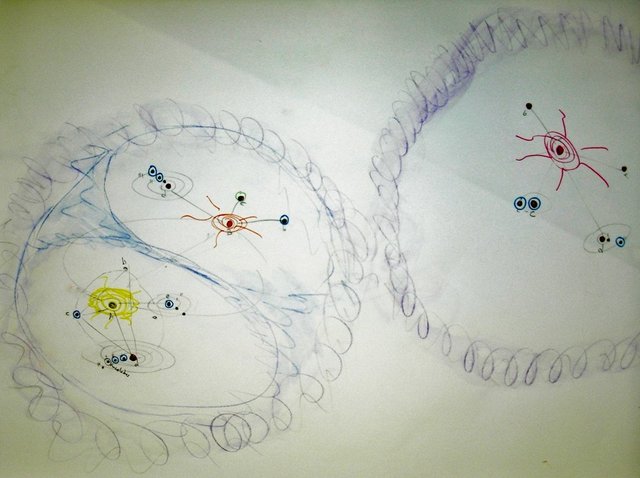
The Gliese 667 system as described for Contact 2012 by Gerald Nordley.
I
Double stars and a third red dwarf at a distance.
Around the yellow star, Three planets, close.
A quartet of moons, held tight, make up the entourage of our dark blue gas planet– Kachol.
Kachol’s moons’ orbits in turn dynamically complex,
moving through a many-gravitied space.
First Moon a blue-grey Mars, nearly all ocean
Second Moon a warm Titan, also mostly ocean–
home to us, mostly, so far, but not our natal place:
that’s Third Moon, another Enceladus, “teakettle” Moon,
Its geysers pumping ice chunks and organic materials
through the whole lunar system.
Fourth Moon a retrograde potato – its role more contingent (you’ll see).
Also on our team was Michele Merril from 2009, an engineer (?) named Mara Williams, and a computer science guy named Ben Sibelman. Ben wrote up a report of the events of the weekend, which included quite a bit about our deliberations, in a “just the facts, ma'am” kind of way (reading that report will definitely help inform the discussion below). My blog touched on some other aspects of the meeting, but again did not explore the background ideas we were playing with very deeply (maybe interesting, but not necessary).
I think those ideas will resonate now, especially with the Steemit audience of anarchists and voluntarists.
By 2012 future humans had apparently gotten boring, and both teams wanted to build aliens. Ben included little about the other team's efforts. They were traditional COTI high school students. If I remember correctly, it was a brother-sister duo, and a friend from the same high school where Israel Zuckerman teaches (remember that Izzy wrote the COTI curriculum). I believe they brought their aliens with them and continued to work on them through the weekend, but I'm not sure about that. I know that they spent a lot more time crafting physical artifacts than we did, but I don't currently have access to any of those (sorry).
The thing that struck me about Contact aliens I had seen was how similar they were, from a biological point of view. 2012's bipedal, four-armed, matriarchal lizard people were pretty standard humanoid SF aliens. They were bilaterally symmetrical, meaning their left and right sides look alike, as opposed to the radial symmetry of starfish and sea urchins and Lovecraftian monsters (who were all aliens).
An Elder Thing, from "At the Mountains of Madness"
HP Lovecraft, writing in the 1920s-30s, was inspired by the discovery of the Burgess Shale, a fossil bed in Canada that preserves some of the earliest Cambrian experiments in body patterns. There is no good reason to believe that the way we look is the way aliens will look. The anthropologists were using a near analogy, biologically, because what they are interested in is culture, and the only culture we know is ours. I wanted to see what changing the biology might do to the culture. I also wanted to explore the classic science fiction idea of the shapeshifter.
Super-Skull, a sketch by Chris Giarusso during Free Comic Book Day
More distant biological analogies
All of the Contact aliens had permanent multicellular bodies and humanlike tribal or hierarchical social structures. This make sense to humans, who also have permanent bodies. Individual cells do sometimes rebel from the body and try to go their own way. We call that cancer, and it freaks us out.
Are there Earth species who don't have permanent bodies? Indeed there are.
Insect Metamorphoses
Many different species go through startling transformations. However, on Earth these are strictly one-way transformations. It makes sense once you know the mechanism. When a caterpillar pupates, most of its old cells die and break down, except for a few stem cells in the imaginal disks, which eat the resulting soup of chemicals and rebuild an entirely new body through cell division.
Slime Molds, or Social Amebas
These unusual critters spend most of their lives squirming through the soil of forest floors as single cells. But in response to a chemical signal, they can gather up like a tiny soft Voltron into a slug-like body that can move faster than a single cell can. Unlike the insects, these changes are sometimes reversible, meaning they can fall apart back into single cells and go about their way. They can also grow into stalk-like reproductive structures to trade genes and make durable spores that can disperse even longer distances on the wind. These transformations are not reversible, but they are negotiable. Dictyostelium experts have worked out that some versions of certain genes are more likely to end up in the stalk, which is a dead end, than in the spores, which go on to another life as single-celled Dictys. These “negotiations” are conducted in the form of chemical messages as the cells attempt to manipulate one another in the process of building the temporary body.
Corals
Corals are small but not microscopic radially symmetrical animals which form reversible symbiotic relationships with algae. In other words, they allow microscopic plants of a different species to live inside their bodies in exchange for the excess sugar they produce from sunlight. Imagine rooting vegetables into your flesh instead of chewing them up and swallowing them, like the classic kids' book about the thumb garden. When a coral “bleaches,” that means it has expelled its companion algae, which drastically reduces its available food supply.
So what we were really after was disrupting the whole idea of bodies and even the concept of a species as being central to culture. This was 2012, so BitCoin existed, but it was still pretty fringe. Now the idea of a decentralized economy is getting a lot more press, and people are talking about smart contracts in the form of computer code. But biology has had smart contracts since the Cambrian explosion built us bodies for the first time. They tend to be permanent contracts, rigidly enforced by cell suicide genes and killer immune cells. But, as we saw above, there are counter-examples. What if alien biology worked more like the legal or political systems, with continual renegotiation of terms? These were the Graxians of Gliese 667.
They evolved modular bodies that could trade whole tissues and organs.
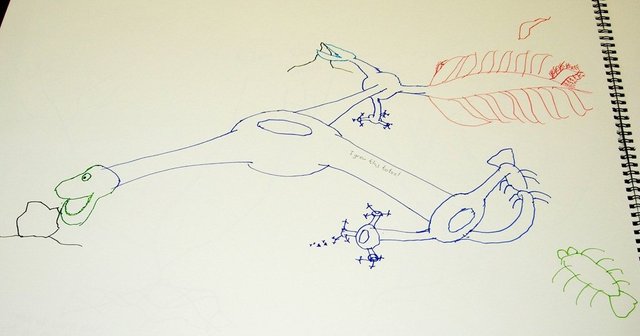
For some reason I don't remember, they used a trilateral or minimally radial symmetry, but it could stack like a fractal. The red part looks kind of like an Eidiacarian from Earth's pre-Cambrian era. [image]
Because of this modularity, they (like the Drums from 2009) had no ethical issues with integrating technology into their bodies.
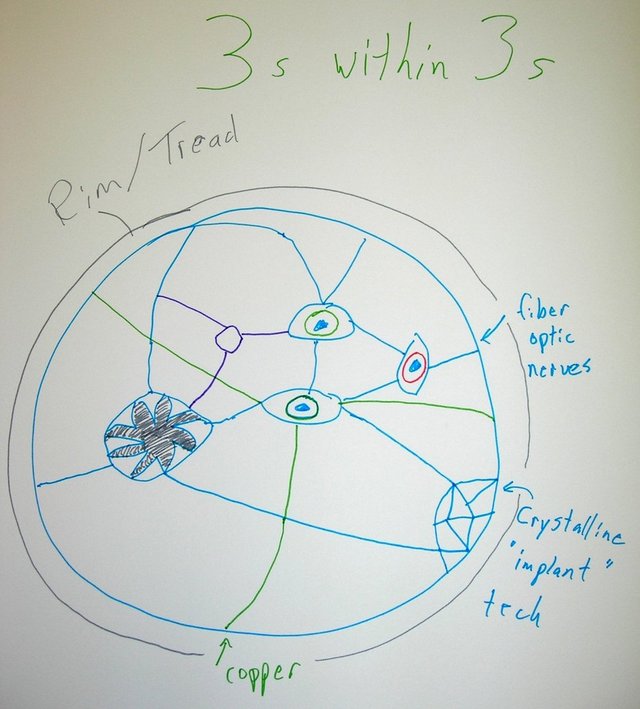
A temporary "corporation" of Graxian techno-organic bits, assembled for a specific purpose with a specific negotiated duration. [image]
In fact, they became their technology, wrapping culture back into a feedback loop with biology.
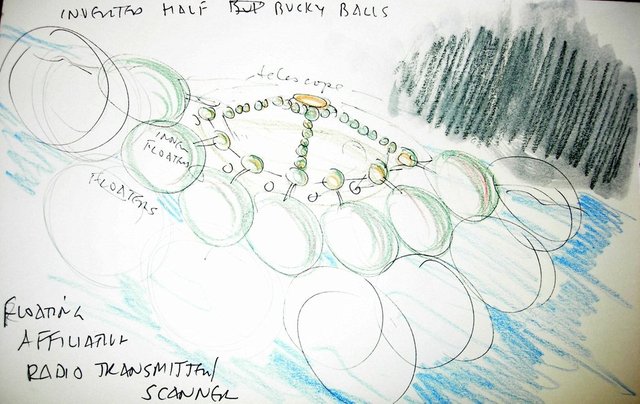
After our tour of the SETI astrobiology labs, we were inspired to have one group of the Graxians build / become a radio telescope, to reach out to their lizardly neighbors. [image]
It would be very cool to have some of the SF writers on or off Steemit adopt the Graxians and do something with them.
I haven't been to Contact since 2012. They've pulled back to an even-years-only schedule, as their principals age and retire. However, as I get more involved with Steemit and the science fiction community here in NC, I'm beginning to think that maybe the stars are right for an East Coast odd-years revival, or expansion, or whatever. Jim Funaro and I have kicked the idea around over e-mail once or twice, but I've always been too broke and too busy trying not be broke. Now, though, Steemit and Smart Media Tokens may open up all kinds of opportunities for creators and educators. I sure hope so.
What do you all think?
Does an interdisciplinary science / art conference, focused on imagining the future, sound like something you might invest time and Steem into making happen? Would you travel to Greensboro, NC, sometime during the spring of 2019, to attend? Would you present about your own work? Would you willingly interact with high school and college students?
Or would you be more interested in staying home and playing with the future through an online course on Moodle (payable with Steem, obviously)? Duration and cost would be dependent on the wishes of those interested.
Thanks for reading!
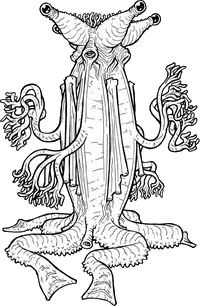

Though I don't wholly reject the idea that parallel evolution could result in a creature vaguely similar to humans I'm definitely more interested in pushing the limits of what life forms are conceivable.
I find your hypothetical creature fascinating. Have you thought of featuring it in a work of fiction or paying an artist to produce more detailed renderings?
I generally get more enjoyment out of writing non-fiction. I more often scratch that other creative storytelling itch with tabletop RPGs. That said, it might be fun to run an art contest for the Graxians, which is something I haven't tried on Steemit. Thanks for the idea.
Congratz. Really much worked for this post and its really good .
Thank you! Yes, this one took probably three hours to write, and another two to upload the photos and locate the links I wanted. Not to mention the three days at the conference itself, almost 6 years ago now.
I wish all your best. You really much working for steemit. You deserve to be really good. Followed you i ll read your next posts
Thanks. Check out the old ones, too. I'm here for the money, but not only the money.
Yes i checked your other posts too . I m happy to see really much working and getting back to what deserve. Gratz. we wanna see you on TOP :)